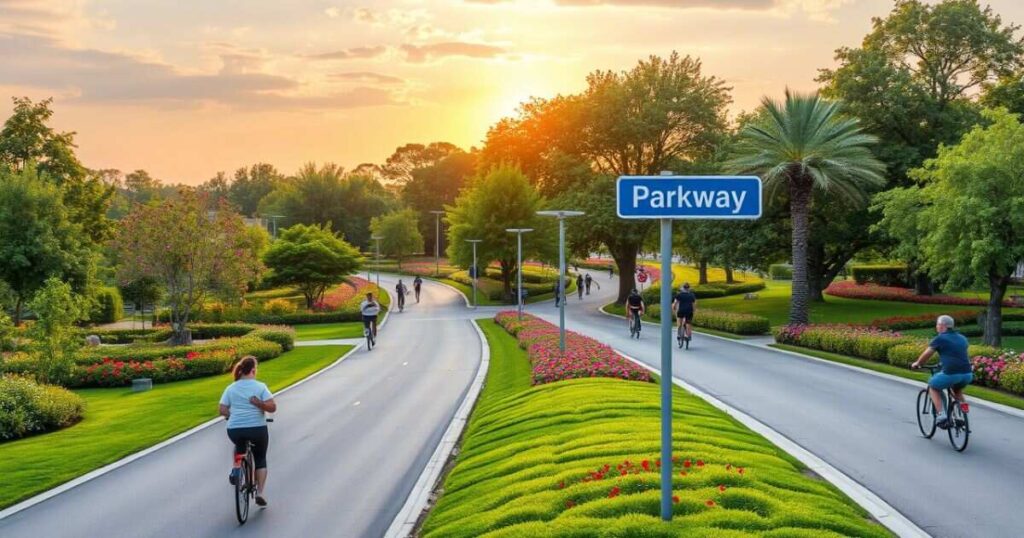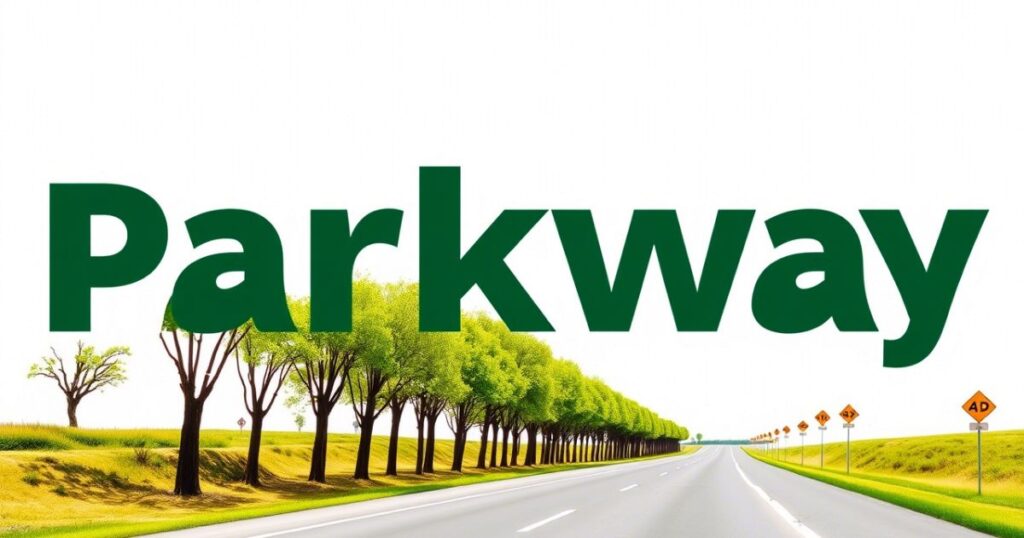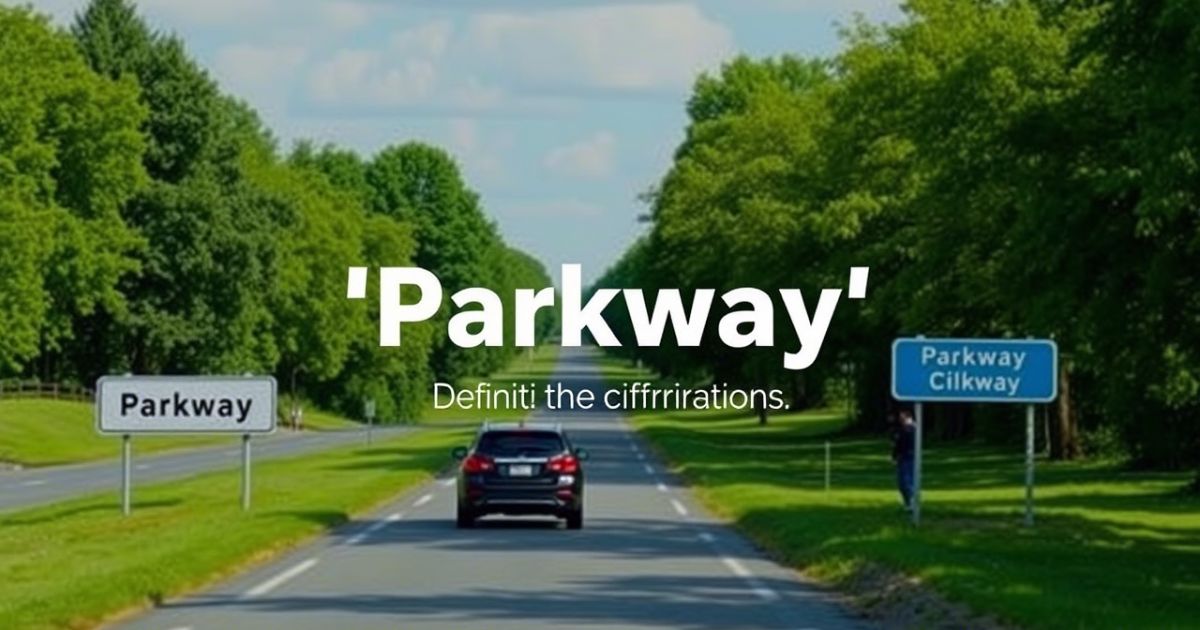The abbreviation for Parkway is a simple yet useful shortcut in addresses and road signs. Instead of writing “Parkway” in full, we use a parkway short form to save space and improve readability. But how do you abbreviate Parkway correctly? The most common Parkway shortened form is “Pkwy.” You’ll often see it in mailing addresses, maps, and street signs.
If you’ve ever wondered what is the abbreviation for Parkway, the answer is simple Pkwy” is the standard. Learning how to abbreviate Parkway helps when filling out addresses or reading road signs. Many cities and postal services use this Parkway short form to ensure clarity. So, the next time you see “Pkwy,” you’ll know exactly what it means. Understanding how do you abbreviate Parkway is a small yet practical way to improve your everyday knowledge!
What’s the abbreviation for Parkway
The abbreviation for Parkway is “Pkwy.” This Parkway short form is commonly used in addresses, road signs, and official documents. Instead of writing the full word, this Parkway shortened version saves space while keeping things clear.
If you’re wondering how to abbreviate Parkway, the answer is simple use “Pkwy.” Many postal services and mapping systems recognize this standard Parkway short form, making it an essential abbreviation to know.
So, what is the abbreviation for Parkway in official use? Whether on a mailing address or a street sign, “Pkwy” is the preferred option. It ensures consistency and prevents confusion when reading directions or filling out forms.
Next time someone asks, how do you abbreviate Parkway, you’ll know the correct answer. Remembering this small detail can help when navigating roads or addressing mail quickly and correctly!
What Does Parkway Mean?

A parkway is a type of road designed for scenic beauty and smooth travel. Originally, parkways were built with green spaces, trees, and landscaped surroundings to create a pleasant driving experience. Today, the term refers to roads that often connect cities, parks, or suburban areas.
Unlike highways, a parkway may have limited access, meaning fewer intersections or commercial buildings along the route. Some parkways are designed for non-commercial vehicles only, maintaining a peaceful and scenic drive. The word “parkway” comes from the idea of roads being lined with parks or natural scenery.
Many well known roads in the U.S. and other countries use “parkway” in their names, such as the Blue Ridge Parkway or the Garden State Parkway. These routes are not just for transportation they also provide beautiful landscapes and enjoyable drives.
So, whether in a city or the countryside, a parkway is more than just a road it’s a journey through nature and design.
The Abbreviation for Parkway
The short form of “Parkway” is commonly written as “Pkwy.” This abbreviation is widely used in addresses, road signs, and official documents to save space while keeping the meaning clear.
Many street names include this shortened version, especially in mailing addresses. For example, “123 Oak Pkwy” is a more compact way to write “123 Oak Parkway” without losing clarity.
Different style guides and postal systems may have slight variations, but “Pkwy.” is the most accepted and recognized form. In the United States, the USPS officially uses this abbreviation for addressing purposes.
This shorter version helps make road names easier to read on signs and maps, avoiding unnecessary clutter. It also ensures that long street names fit within limited space in databases and forms.
Using abbreviations like this is a common practice in transportation and urban planning, making navigation simpler for drivers and pedestrians alike.
So, next time you see “Pkwy.” on a sign, you’ll know it’s just a shorter way of saying “Parkway.”
Why Does “Pkwy” Matter?
“Pkwy” matters because it simplifies road names, making addresses shorter and easier to read. This abbreviation is commonly used in mailing systems, road signs, and navigation apps to save space while keeping the meaning clear.
In postal services, using the correct abbreviation ensures mail is delivered accurately and efficiently. The USPS and other mailing systems recognize “Pkwy” as the official short form, helping prevent confusion in address formatting.
On road signs and maps, space is limited, so abbreviations like “Pkwy” make directions more readable. Drivers can quickly recognize the term without struggling with long street names, making navigation smoother.
Whether you’re writing an address, reading a map, or using GPS, this abbreviation plays a small but important role in everyday convenience. It keeps information clear and accessible, helping people find locations faster and more efficiently.
The Cultural Significance of Parkways
Parkways hold cultural significance beyond just being roads—they often symbolize scenic beauty, urban planning, and historical preservation. Many parkways were designed not just for transportation but to provide a pleasant driving experience, connecting people to nature and history.
In the early 20th century, parkways were built to create green corridors, blending roadways with natural landscapes. Cities like New York and Washington, D.C., developed these routes to encourage leisurely travel while preserving surrounding environments.
Parkways are also tied to cultural heritage, as many follow historical trails or pass through significant landmarks. They serve as reminders of a city’s development and its efforts to balance infrastructure with environmental conservation.
Beyond their practical use, parkways influence community identity. They shape the way people experience a place, offering scenic drives, recreational spaces, and a sense of connection to the land. Their cultural impact continues to be felt in modern urban design.
Parkway vs. Acronym: What’s the Difference?
Many people confuse abbreviations and acronyms, but they’re not the same. An abbreviation shortens a word, like “Pkwy” for “Parkway,” while an acronym forms a new word from initials, like “NASA” for “National Aeronautics and Space Administration.”
When shortening “Parkway,” we use an abbreviation rather than an acronym because the letters don’t form a pronounceable word. Instead, “Pkwy” simply condenses the original word while keeping its meaning clear.
Acronyms often stand alone as words, making them easy to remember and say. Abbreviations, on the other hand, require context, like seeing “Pkwy” on a street sign or address label to understand its full meaning.
Understanding this difference helps in reading and writing correctly. Whether using abbreviations or acronyms, the key is knowing how they function in language and communication.
A Practical Shortcut for Everyday Use
Using abbreviations like “Pkwy” is a practical way to save time and space in everyday writing. Whether filling out an address, reading a road sign, or using GPS, abbreviations make information easier to process quickly.
Instead of writing out “Parkway” every time, the shortened form keeps things concise while still being widely understood. This is especially helpful in places where space is limited, like mailing labels, maps, and official documents.
From city planning to navigation apps, abbreviations streamline communication. They ensure clarity while reducing clutter, making it easier to find locations and follow directions efficiently.
By using abbreviations correctly, we make daily tasks simpler. Whether you’re giving someone an address or reading a street sign, knowing these shortcuts can save time and effort.
Why Is “Pkwy” Used?
The abbreviation “Pkwy” is used to save space and improve readability in addresses, signs, and maps. Writing out “Parkway” every time can be unnecessary, especially in areas where brevity is important, like mailing labels or road signs.
Using “Pkwy” helps ensure that information is clear without taking up too much space. It allows for quicker recognition while maintaining accuracy in directions and locations.
Official postal services, city planners, and GPS systems all use abbreviations like “Pkwy” to keep things efficient. This standardization helps avoid confusion and ensures consistency across different platforms.
Whether you’re sending mail, following directions, or reading a street sign, abbreviations like “Pkwy” make everyday navigation easier. They provide a practical solution for organizing and displaying location-based information.
Cultural and Historical Notes: The Origins of the Parkway
The concept of the parkway dates back to the late 19th and early 20th centuries, designed as scenic roads that blended transportation with nature. These roads were intended to provide a peaceful, tree-lined route for drivers, often connecting parks or historic sites.
One of the earliest and most famous parkways is the Bronx River Parkway in New York, built in the early 1900s. It set the standard for future parkways by integrating natural landscapes with modern roadways, creating a balance between urban expansion and environmental preservation.
Parkways were initially designed for leisurely drives rather than heavy traffic. Unlike highways, they often included winding paths, limited access points, and lush greenery to maintain their aesthetic and recreational value.
Many historic parkways, such as the Blue Ridge Parkway and George Washington Memorial Parkway, still serve as cultural landmarks today. They preserve history while offering scenic travel experiences.
Over time, the term “parkway” has evolved, and while some still maintain their scenic beauty, others have become essential urban roads. However, their original purpose of blending nature with transportation remains a key part of their legacy.
Related Guide:
Papi Chulo Word Meaning, Uses, and Examples
How to Pronounce Abbreviation for Parkway
The abbreviation for Parkway, “Pkwy,” is pronounced as “park-way” just like the full word. Even though the spelling is shortened, the pronunciation remains the same.
Some people might try to sound it out as “P-K-W-Y,” letter by letter, but this isn’t common in everyday speech. Instead, when reading an address with “Pkwy,” it’s best to say “Parkway” in full.
This abbreviation is mostly used in written forms, such as street signs, maps, and mailing addresses. It helps save space while still keeping the meaning clear.
So, if you see “Pkwy” on an address, don’t overthink it just say “Parkway” as you normally would!
When to Use the Abbreviation for Parkway
The abbreviation for Parkway, “Pkwy,” is commonly used in addresses, maps, and official documents where space is limited. It helps keep street names short while maintaining clarity.
When writing an address for mail or packages, using “Pkwy” ensures accuracy and aligns with postal standards. This is especially useful when filling out forms with character limits.
Businesses, real estate listings, and navigation apps also use “Pkwy” to make locations easier to read. Abbreviations like this prevent clutter on signs and digital screens.
However, in formal writing or when clarity is crucial, it’s best to spell out “Parkway” in full. This avoids any confusion, especially for those unfamiliar with common abbreviations.
Other Examples of Abbreviations for Parkway and Streets
Just like “Parkway” is shortened to “Pkwy,” many other street types have abbreviations for convenience. Here are some common examples:
- Boulevard → Blvd
- Avenue → Ave
- Street → St
- Road → Rd
- Drive → Dr
- Lane → Ln
These abbreviations help save space on signs, maps, and official documents. They are widely used by postal services, city planners, and navigation systems.
Synonyms for Parkway
A parkway is often associated with scenic roads, but there are several synonyms that describe similar routes. Terms like boulevard, expressway, highway, and thoroughfare are commonly used, depending on the road’s design and purpose. While a boulevard typically includes trees and pedestrian areas, an expressway is built for faster travel.
Other words that can replace parkway include drive, avenue, roadway, and passage. Each term varies in meaning some focus on aesthetics, while others emphasize functionality. Understanding these synonyms helps in distinguishing different types of roads in various locations.
Antonym for Parkway

While a parkway is a broad, scenic road often lined with greenery, its antonyms focus on narrower or less aesthetic routes. A back alley or lane represents the opposite a small, often hidden passage used for secondary travel. These paths lack the open, landscaped design of a parkway.
Another antonym could be a dead-end street or cul-de-sac, which does not provide a continuous route like a parkway. Instead of flowing traffic, these streets are enclosed, limiting movement and access.
Industrial roads, such as service roads or access roads, also contrast with parkways. They are built for function rather than beauty, often found near warehouses or factories, serving practical transport needs instead of scenic drives.
The History of the Word Abbreviation for Parkway
The abbreviation for “Parkway,” commonly written as Pkwy, has a straightforward history rooted in the need for simplicity. As road signs, maps, and documents required more efficient labeling, shortening words like “Parkway” became a practical solution. This helped drivers and city planners navigate and communicate road names quickly.
Historically, abbreviations like Pkwy followed common English shortening patterns, often dropping vowels while retaining key consonants. Over time, standardized road abbreviations were established by organizations like the United States Postal Service (USPS) to ensure consistency in addresses. Today, “Pkwy” is widely recognized and used in postal codes, street signs, and GPS systems.
Example of the Word and Abbreviation for Parkway

A practical example is: “The new shopping center is at 789 Riverbend Pkwy, near downtown.”
In this sentence, “Pkwy” makes the address concise while keeping it understandable. Using abbreviations like this is useful for mailing addresses, maps, and navigation apps, ensuring clarity while saving space.
FAQ’s
What is the short form of a parkway?
The Abbreviation for Parkway is commonly used on street signs and addresses to save space while keeping directions clear and easy to read.
What does a parkway mean?
A parkway is a scenic road designed for smooth traffic flow, often lined with trees or green spaces, providing a pleasant driving experience.
How do you shorten the word parkway on streets?
The Abbreviation for Parkway is a simple way to write the word in addresses, helping with navigation and keeping maps and signs concise.
What does PKWy stand for?
PKWy is a less common variation, but the Abbreviation for Parkway most widely used is found on official documents, road signs, and mailing addresses.
Can you give an example of a parkway?
An example would be “Blue Ridge Abbreviation for Parkway,” a famous scenic highway known for its breathtaking mountain views and winding roads.
Conclusion
The abbreviation for Parkway is “Pkwy,” a simple way to shorten long street names. Many people wonder, “How do you abbreviate Parkway?” or “What is the abbreviation for Parkway?” and the answer is always “Pkwy.” This Parkway short form helps fit road names on signs, maps, and addresses. If you’ve ever asked, “How to abbreviate Parkway?” it’s just a matter of replacing the full word with “Pkwy.” The Parkway shortened version is widely used for easy navigation.
Knowing the abbreviation for Parkway is useful in everyday life. Whether you’re reading an address or looking at road signs, the Parkway shortened term makes information clearer. If you’ve ever asked, “What is the abbreviation for Parkway?” or “How do you abbreviate Parkway?”, now you know! The Parkway short form “Pkwy” is the standard way to write it, ensuring clarity in postal services, maps, and navigation.

Atlas Reid is an experienced administrator with 5 years of expertise in managing operations, streamlining processes, and ensuring efficiency. Skilled in leadership, organization, and problem-solving to drive business success.








